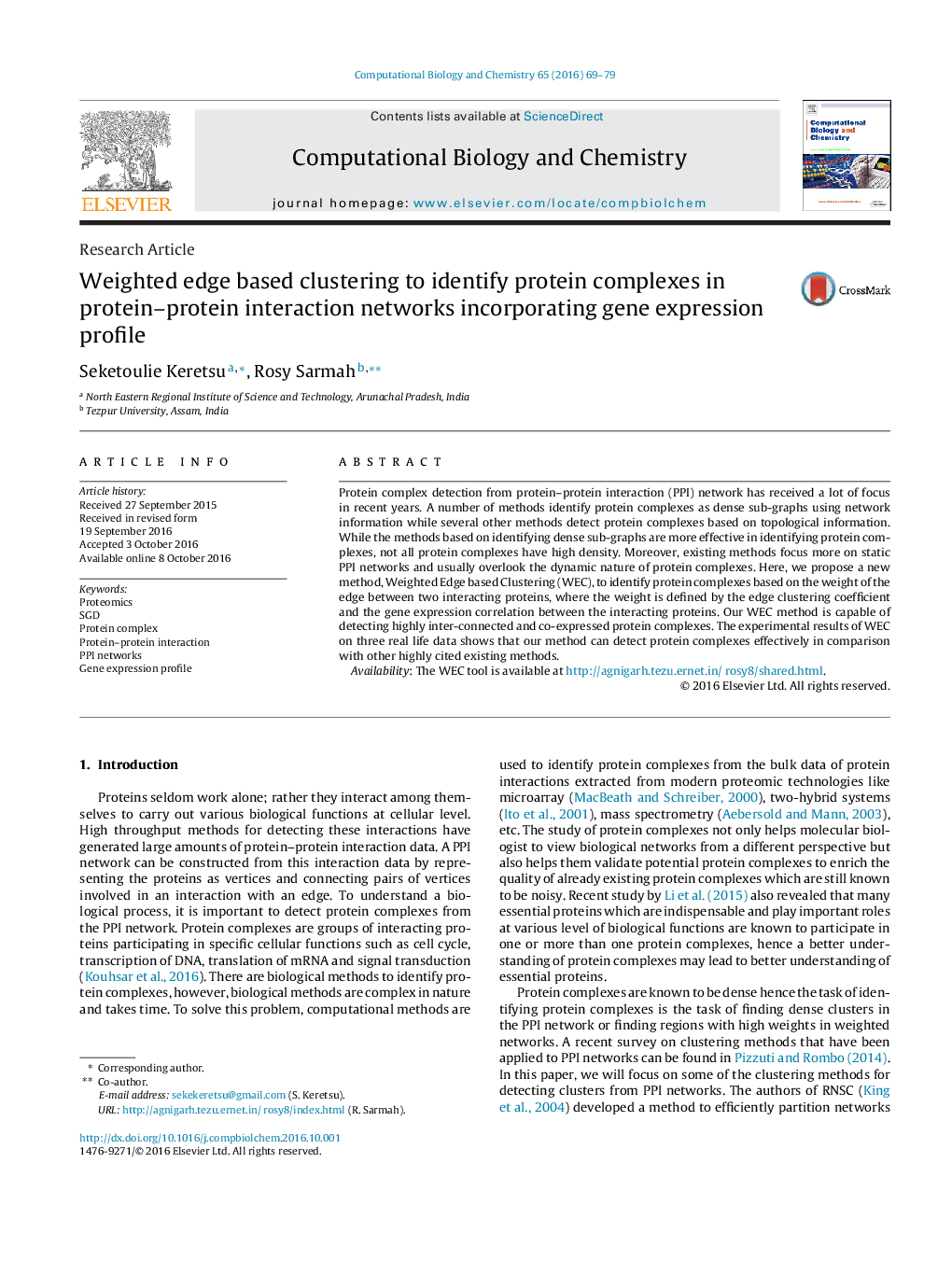| Article ID | Journal | Published Year | Pages | File Type |
|---|---|---|---|---|
| 6451259 | Computational Biology and Chemistry | 2016 | 11 Pages |
â¢We used gene expression information from gene expression profile and topological information from protein-protein interaction networks to improve protein complex identification.â¢Our method shows better prediction outcome compared to its existing methods.â¢Resulting predicted complexes shows higher biological significance compared to those complexes predicted by its counterpart methods.â¢Java application implemented based on the proposed method.â¢Experimental outcome supports incorporation of biological information can improve detection methods.
Protein complex detection from protein-protein interaction (PPI) network has received a lot of focus in recent years. A number of methods identify protein complexes as dense sub-graphs using network information while several other methods detect protein complexes based on topological information. While the methods based on identifying dense sub-graphs are more effective in identifying protein complexes, not all protein complexes have high density. Moreover, existing methods focus more on static PPI networks and usually overlook the dynamic nature of protein complexes. Here, we propose a new method, Weighted Edge based Clustering (WEC), to identify protein complexes based on the weight of the edge between two interacting proteins, where the weight is defined by the edge clustering coefficient and the gene expression correlation between the interacting proteins. Our WEC method is capable of detecting highly inter-connected and co-expressed protein complexes. The experimental results of WEC on three real life data shows that our method can detect protein complexes effectively in comparison with other highly cited existing methods.Availability: The WEC tool is available at http://agnigarh.tezu.ernet.in/~rosy8/shared.html.
